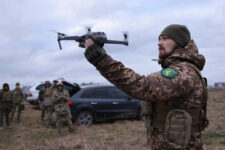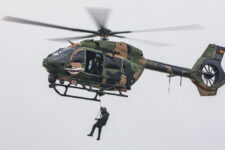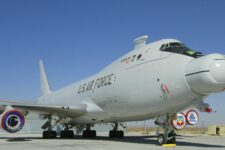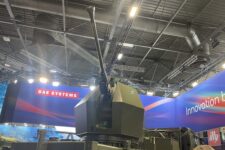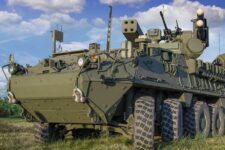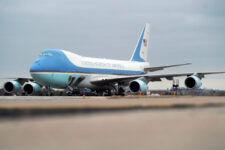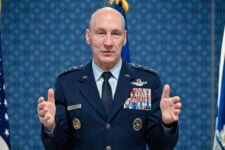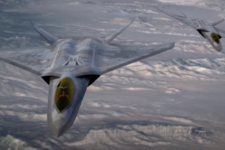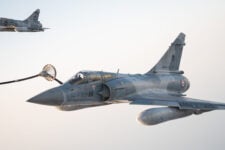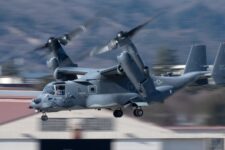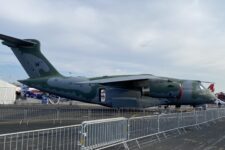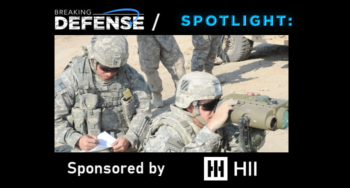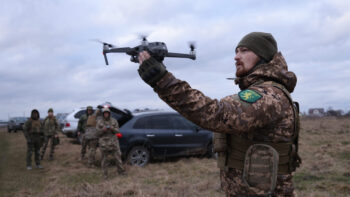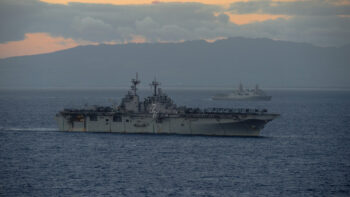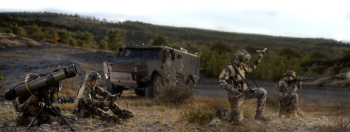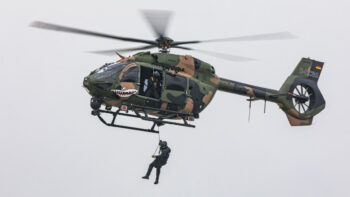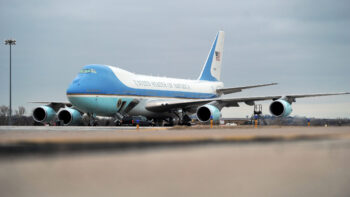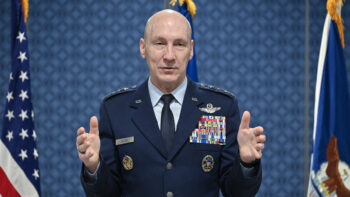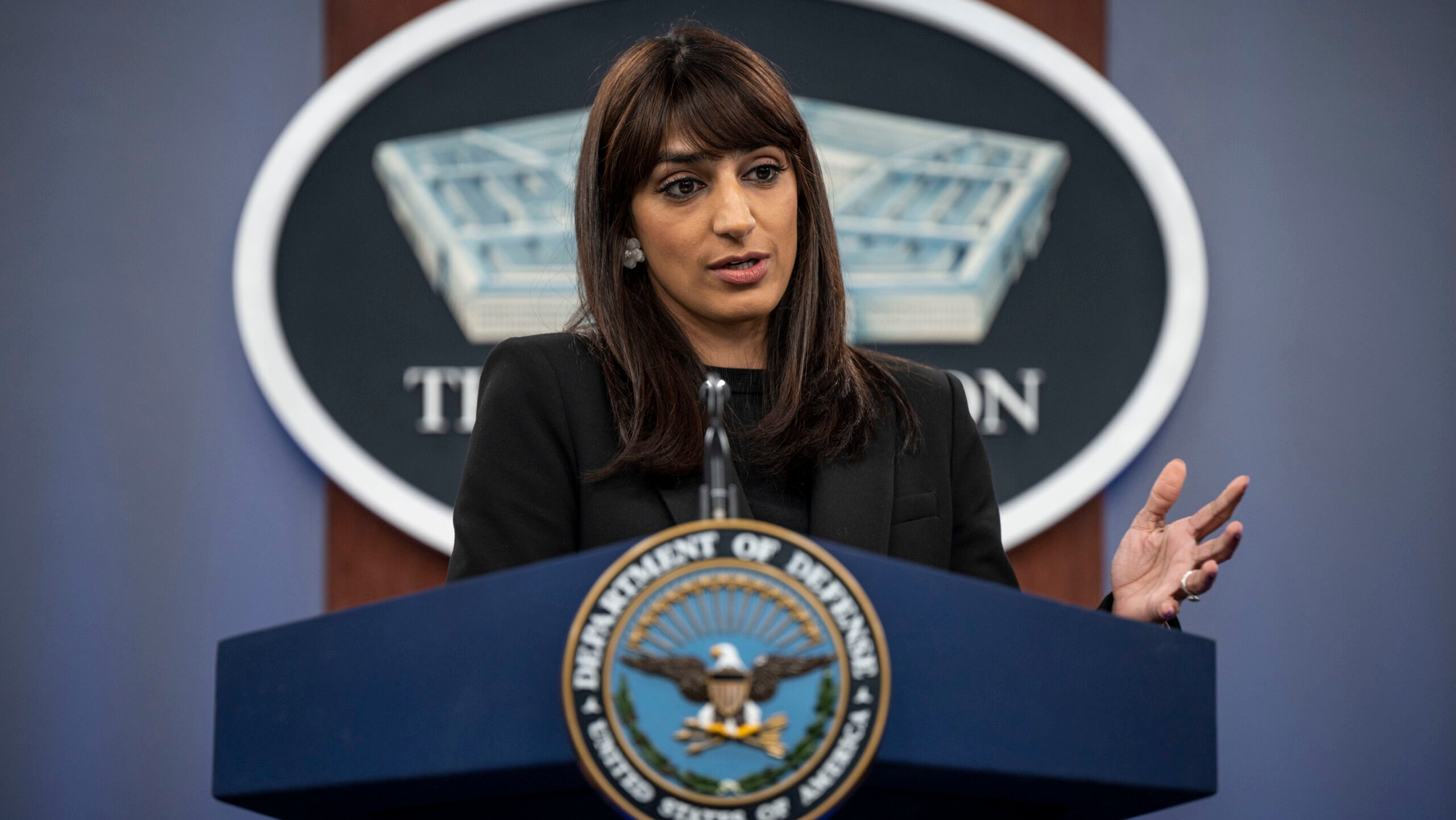
Deputy Pentagon Press Secretary Sabrina Singh conducts a press briefing at the Pentagon in Washington, D.C., Jan. 25, 2024. (DoD photo by U.S. Navy Petty Officer 1st Class Alexander Kubitza)
WASHINGTON — As it investigates who exactly launched a deadly drone strike on a US installation in Jordan, US Central Command (CENTCOM) is also weighing whether it needs to “strengthen” its air defenses in the Middle East.
“To my knowledge, there was nothing different or new about this attack that we’ve seen in other facilities that house our service members,” Pentagon spokeswoman Sabrina Singh told reporters today. “Unfortunately, this attack was successful, but we can’t discount the fact that other attacks, whether Iraq or Syria, were not intended to kill our service members.”
As such, CENTCOM is looking at how it can “better refine not only your air defenses, but prevent future attacks like this from happening again,” she said.
Since Oct. 17, the department has tracked 165 attacks on US troops in the region, including 66 in Iraq and 98 in Syria in addition to the one in Jordan on Sunday that killed three Army Reserve soldiers and injured 40 others. The military has successfully intercepted drone and missile attacks in the past. While details are slowly emerging about that attack, it is being blamed on a one-way, unmanned aerial system (UAS) that hit a base dubbed Tower 22 in northeast Jordan — close to the intersection of the Jordanian, Syrian and Iraqi borders.
Tower 22, about a dozen miles from al-Tanf, is used as a logistics node, of sorts, for troops supporting Operation Inherent Resolve (OIR), the Pentagon’s operational name for the operations against the Islamic State. Every base with troops inside the CENTCOM region, including Tower 22, has counter-UAS (c-UAS) capabilities that can include layered kinetic and electronic warfare capabilities, one Army source told Breaking Defense today. Singh did not disclose why those c-UAS systems there either didn’t work or weren’t activated.
However, the Wall Street Journal first reported that as the attack drone approached Tower 22, a US drone was also returning to base around that time, thus leading to confusion over whether the enemy drone was friend or foe. Singh did not confirm those reports, but said it is something CENTCOM is currently assessing what exactly happened, along with just what kind of drone it was.
RELATED: To counter drones, Army seeks layers rather than ‘silver bullets’
However, for now the Pentagon believes the attack was deadly this time around because of what it hit.
“What was different about this attack is where it landed: It did impact…where [the] living quarters are,” Singh said. “I believe it was pretty early in the morning, so people were actually in there.”
Part of CENTCOM’s assessment now into the incident will examine air defense capabilities in the region, and whether tactics, techniques and procedures need to change.
For years the US military has been working to beef up air defenses, especially against the proliferation of low-cost drones, and even set up a Joint Counter-small Unmanned Aircraft Systems Office (JCO) that is led by the Army.
All Eyes On Biden’s Response
The US is also looking to identify just what group is responsible. For now, the Biden administration is preliminarily pointing the finger towards an Islamic Revolutionary Guard Corps-backed militia, with Singh noting that the attack has the “footprint” of Kata’ib Hezbollah. The administration is placing at least some of the blame for the soldiers’ deaths on Tehran’s doorstep due to financial and weapons support of such groups.
But as tensions in the region continue to rise and conflict widen in the region, the Pentagon and White House are walking a delicate line.
“We are not looking for a war with Iran,” National Security Council spokesman John Kirby said at the White House today. Seconds later, though, he added, “This attack over the weekend was escalatory, make no mistake about it, and it requires a response.”
Iran, meanwhile, is denying involvement, and earlier today, Iranian Foreign Ministry Spokesperson Nasser Kanaani said that regional armed groups in the region do not take orders from Iran, and his country does not welcome the expansion of a regional conflict.
“Repeating the unfounded allegations against Iran is shifting of the blame and a plot by those who see their interests in once again getting the US involved in a new conflict in the region and provoke it to expand and escalate the crisis in order to put a lid on their problems in this way,” Kanaani said.
Despite Iran’s denial, several analysts predict that Washington may retaliate differently this time around now that three soldiers are dead, even if other attacks sought similar outcomes.
“These strikes are not shots across the bow, or demonstrations of force: They are, and have been, attempts to kill Americans — for months,” Jonathan Lord, senior fellow and the director of the Middle East Security Program at the Center for a New American Security, told Breaking Defense today in an emailed response to questions. “It’s a testament to our defensive capabilities that up until now, casualties have been limited. … The only thing that has changed is, this time, they were tragically successful.”
Calling Sunday’s attack a “very major escalation,” associate professor at the Near East South Asia Center for Security Studies David Des Roches said that after months of “relatively measured and proportionate” responses to previous events, he is anticipating a “very, very significant” response from Washington this time around. That response, he noted, could include everything from bombers to naval assets striking Iranian interests, but likely not a direct target on Iranian soil.
“I think that it will be an escalation in the target set away from targeting only buildings, weapons stores, sites, and a very few people identified as immediately involved in launching attacks on US forces towards the command and control and the structural base of the Iran directed proxy networks to include possibly Iranian Revolutionary Guard leadership,” he told Breaking Defense today.
France makes new ‘pact’ with industry to speed small drone production, acquisition
Like Washington, Paris has learned that it must help commercial industry along and reform its own buying practices to catch up in explosion of small UAV battlefield use.
